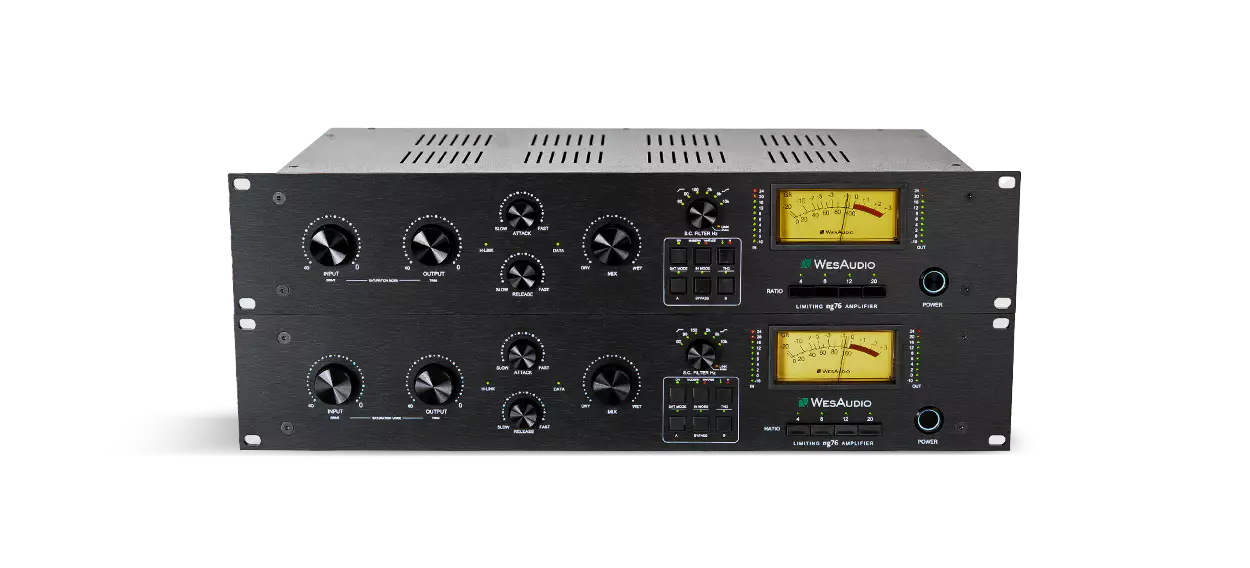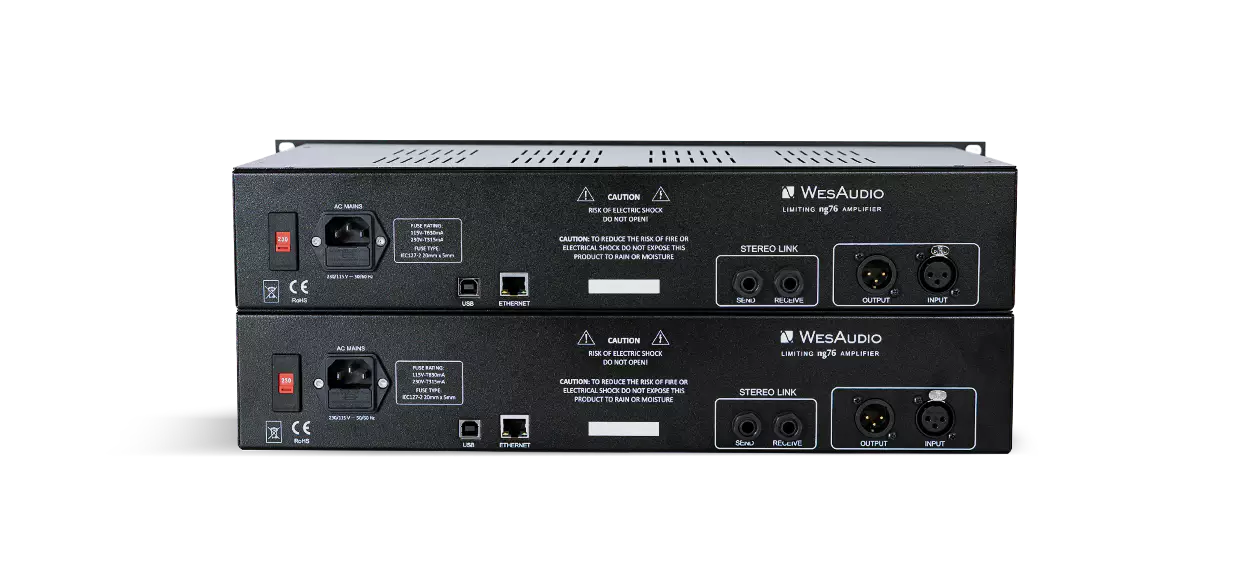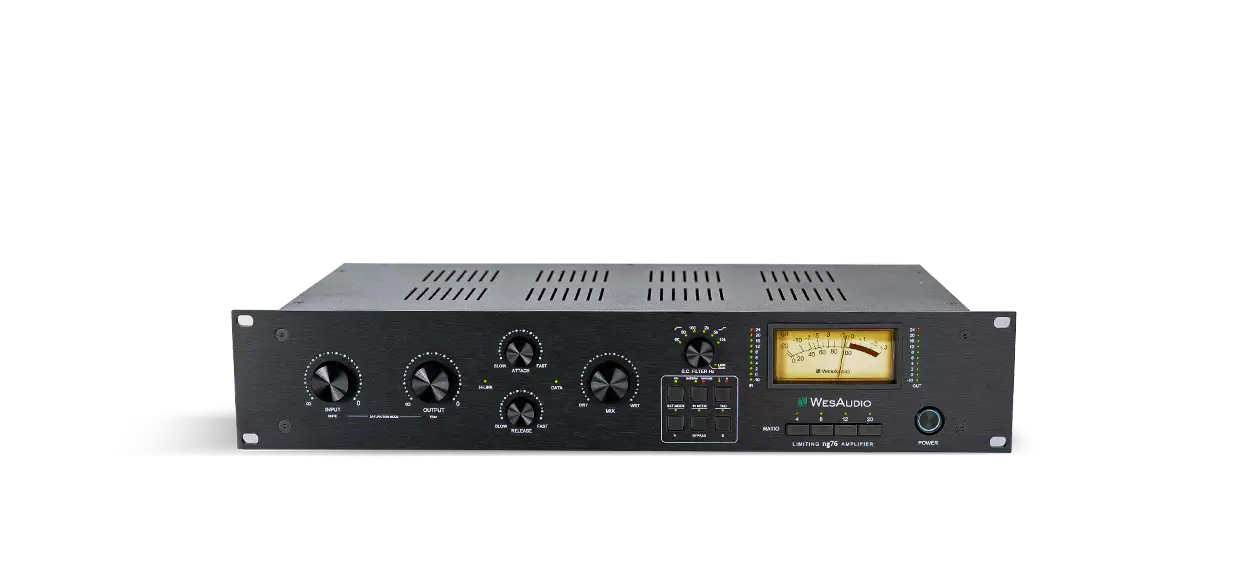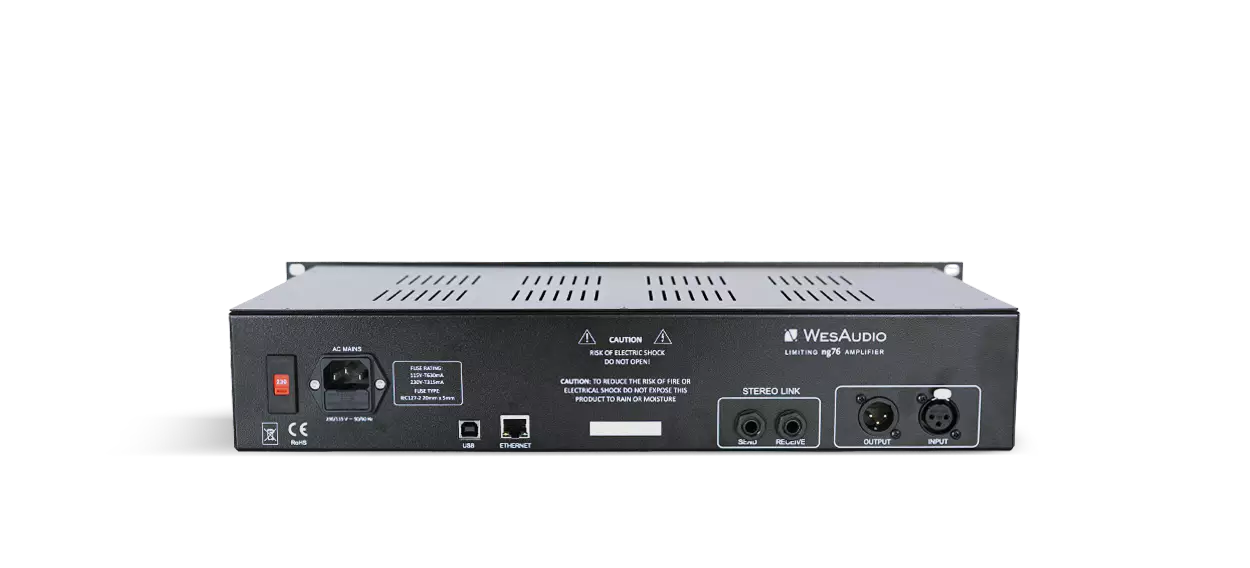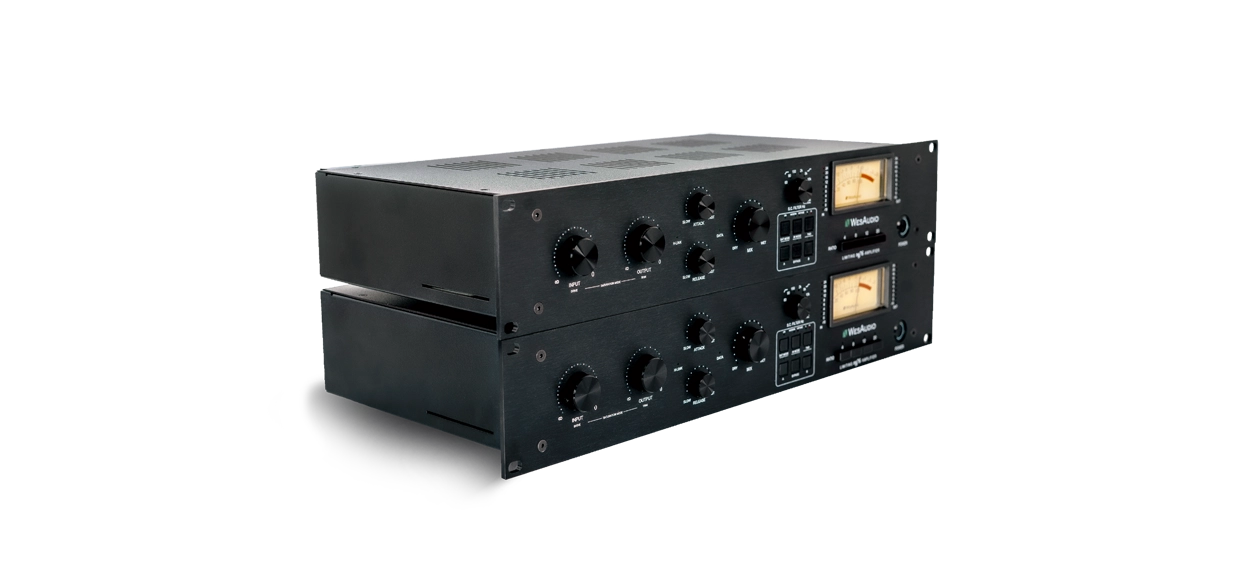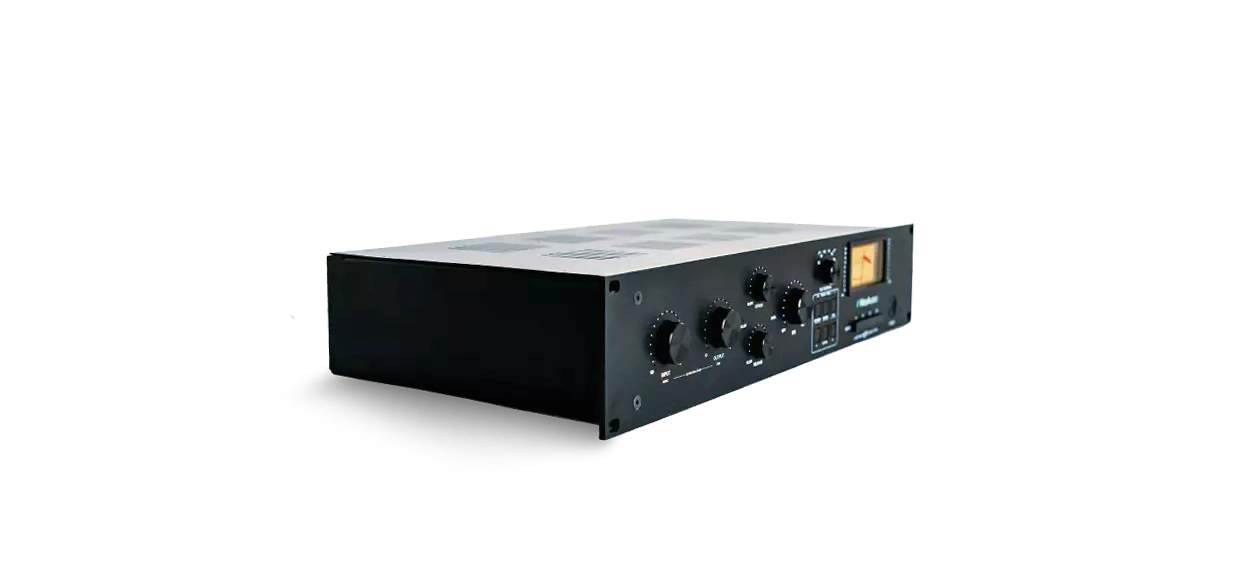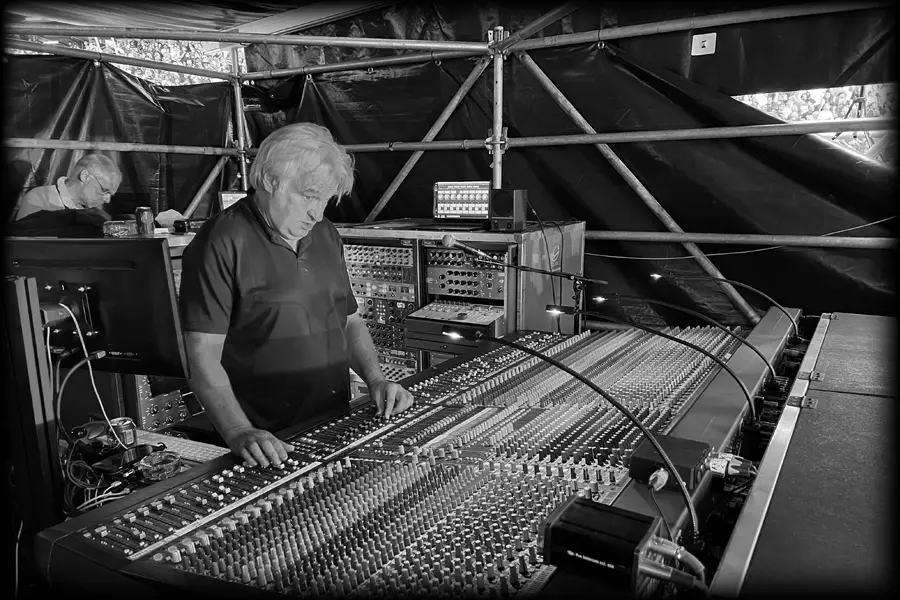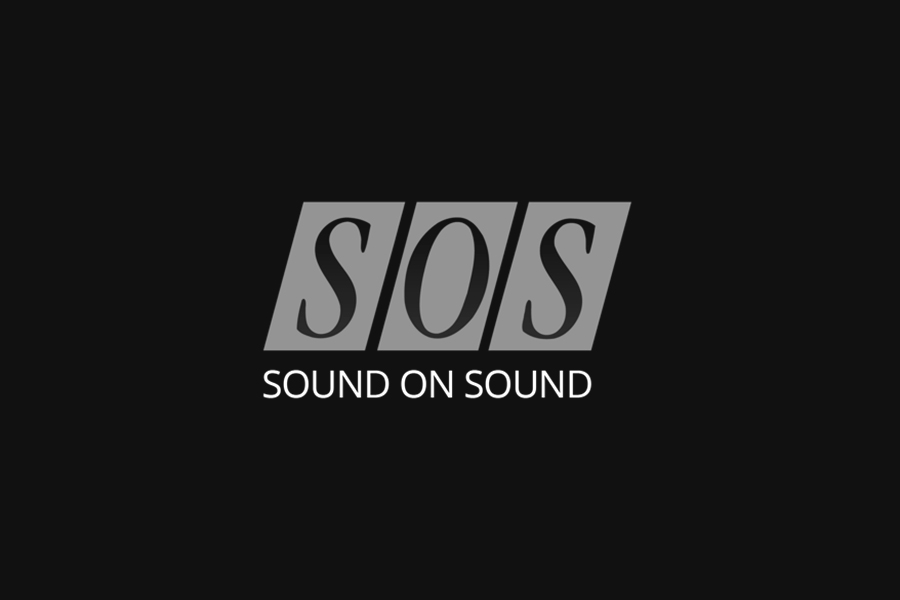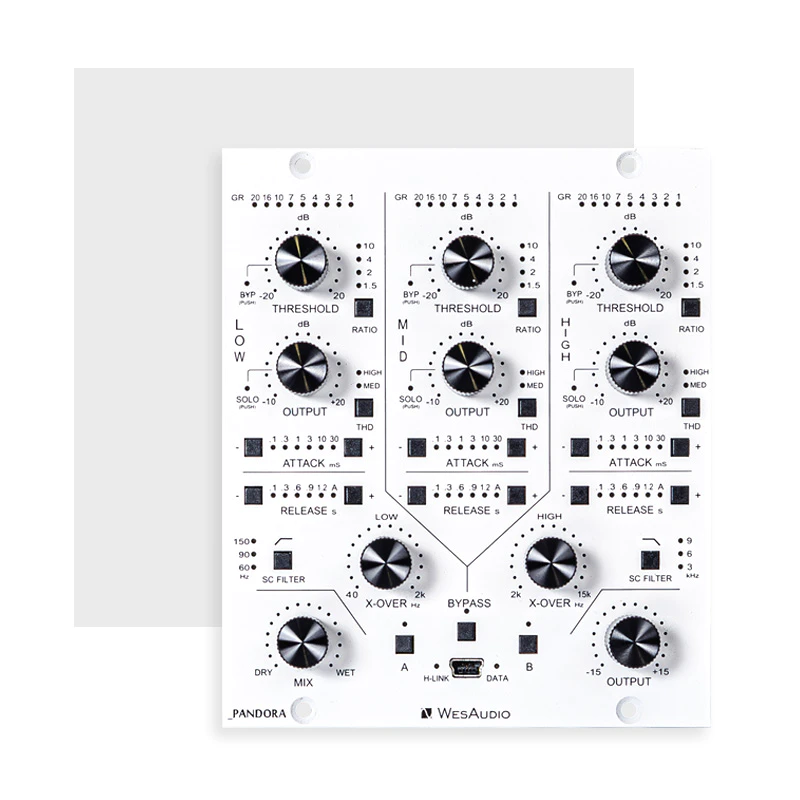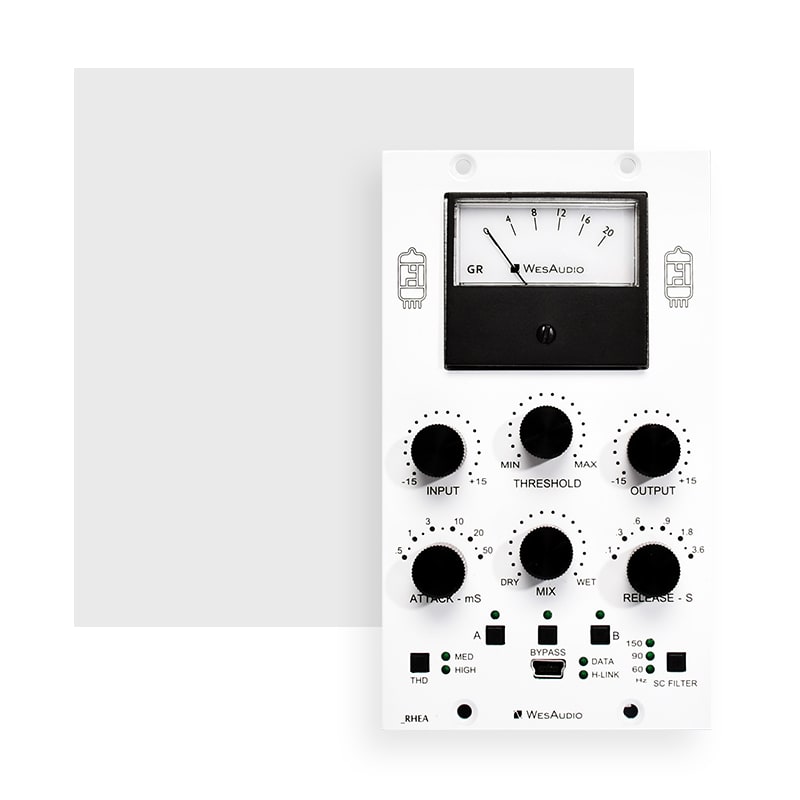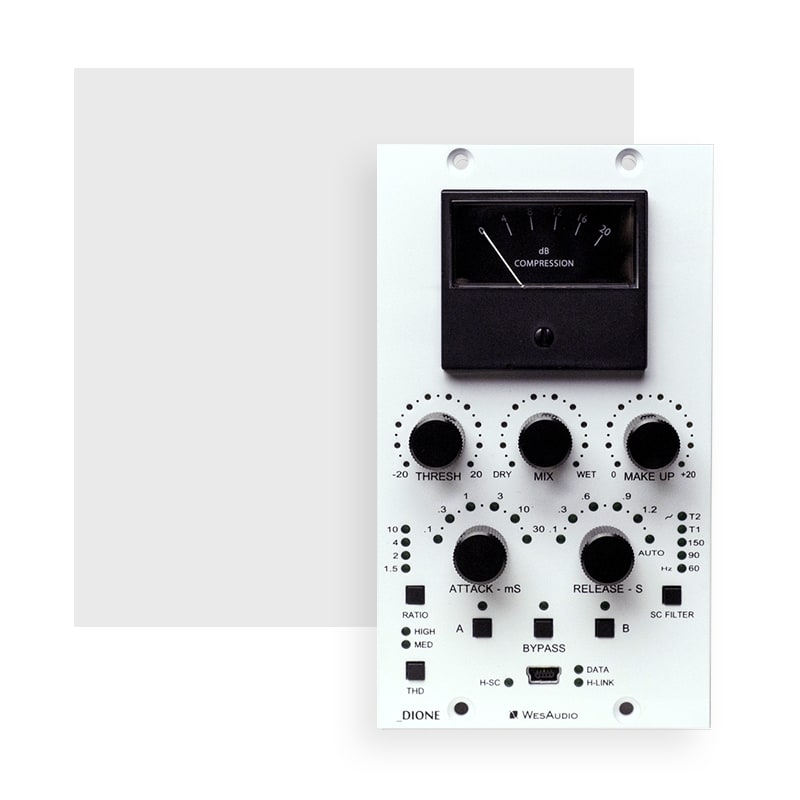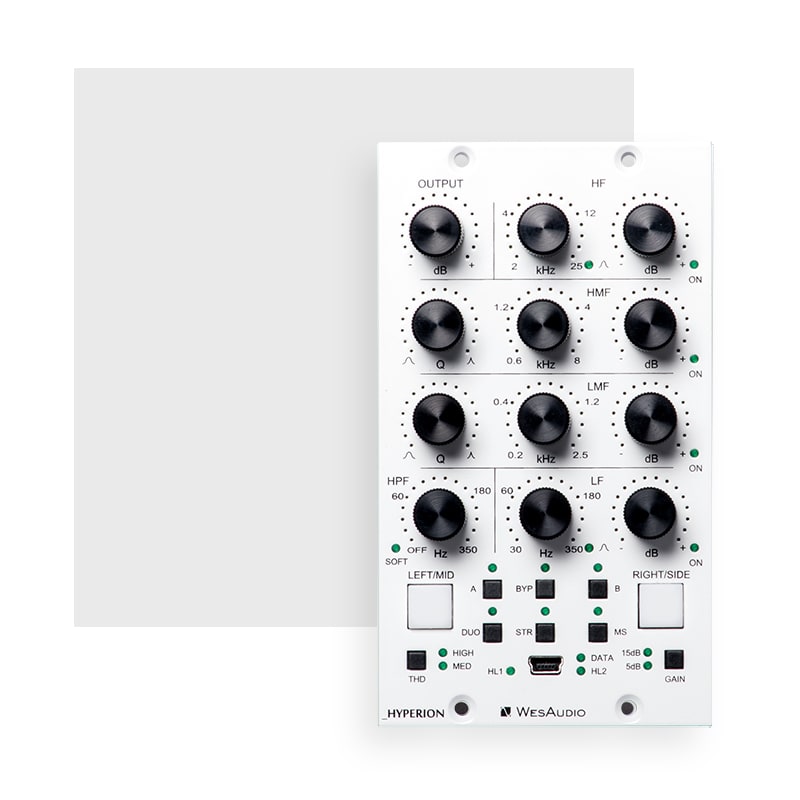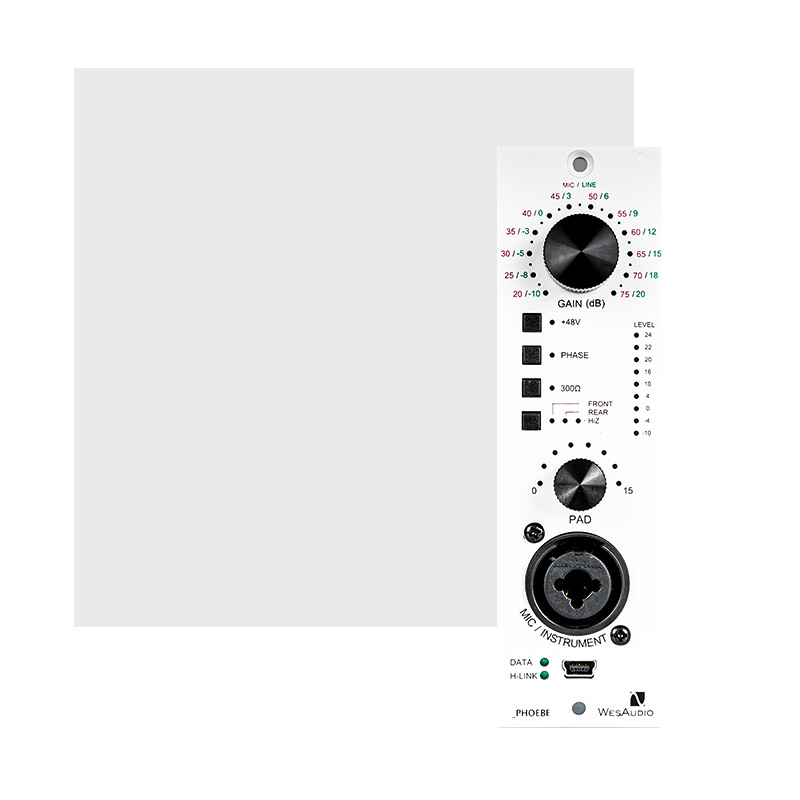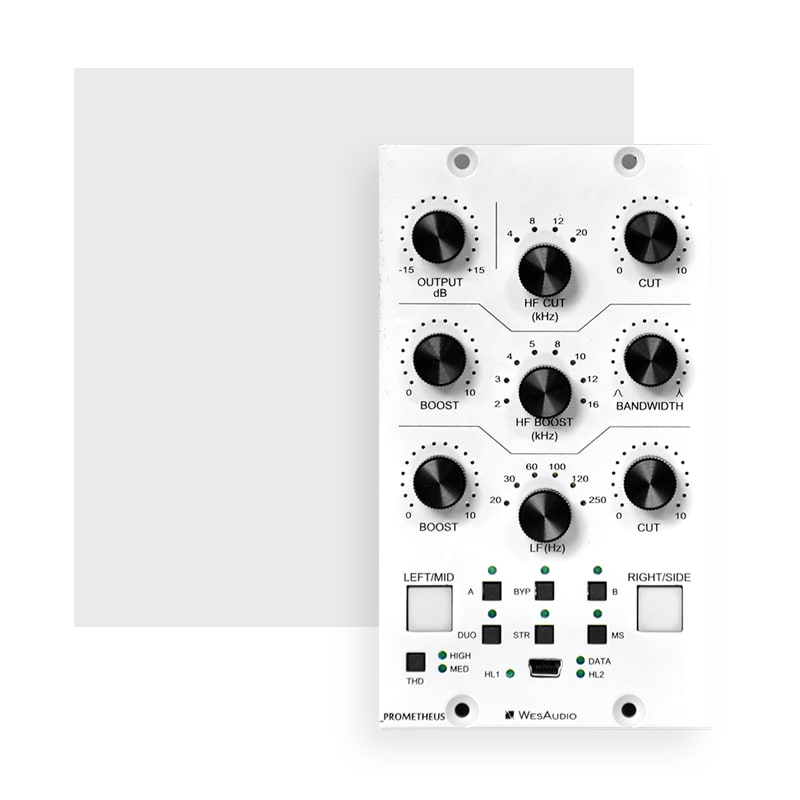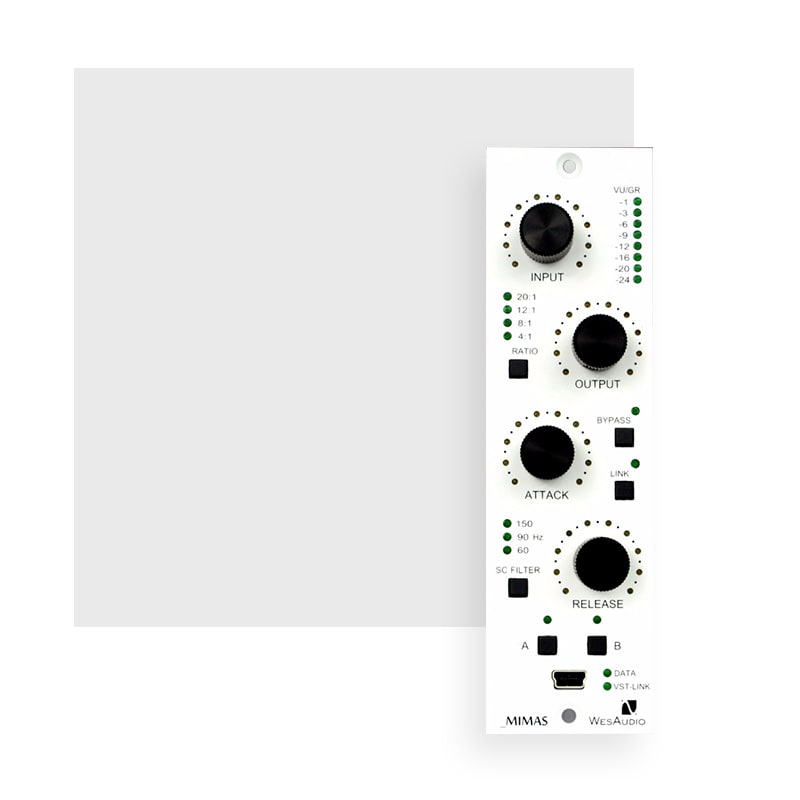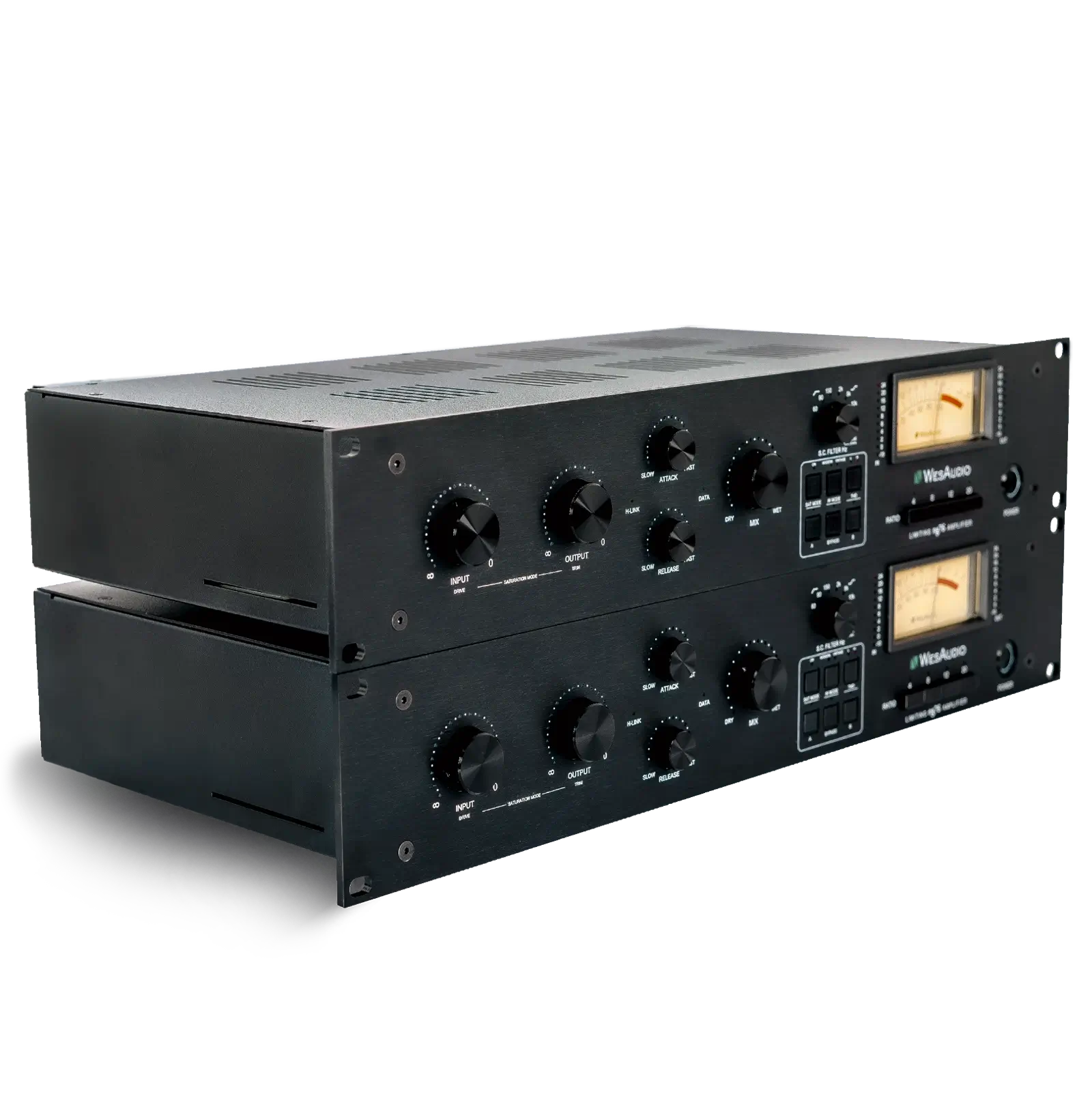
ng76
Next generation FET compressor with digital recall and automation
For over 50 years, FET compressors have been a cornerstone in recording studios, known for their distinctive sound and reliability. The 76-style FET compressor, in particular, has shaped countless hit records, solidifying its status as a trusted and versatile tool for producers and engineers worldwide. Building on this iconic design, we introduce the ng76—a fully analog FET compressor enhanced with modern versatility, offering seamless DAW integration and digital recall.
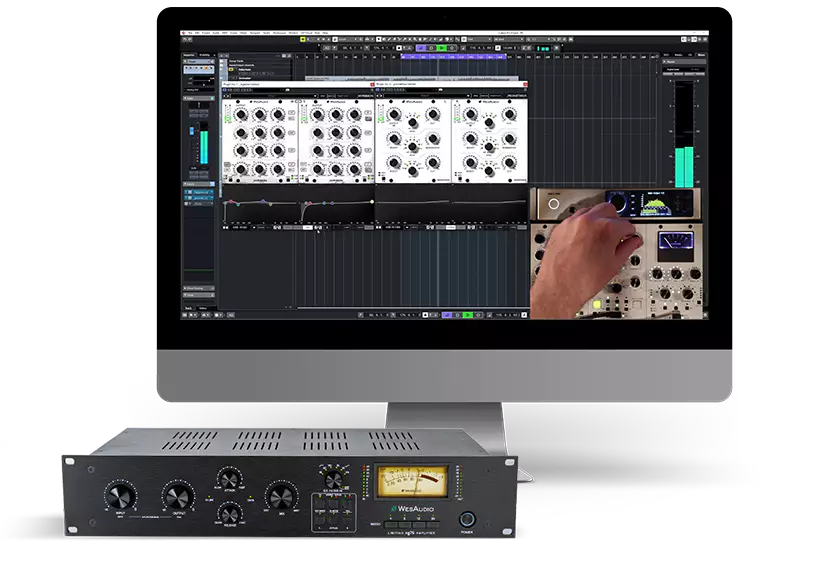
Package contents
| Device | x 1 |
| Power cable | x 1 |
| USB B cable | x 1 |
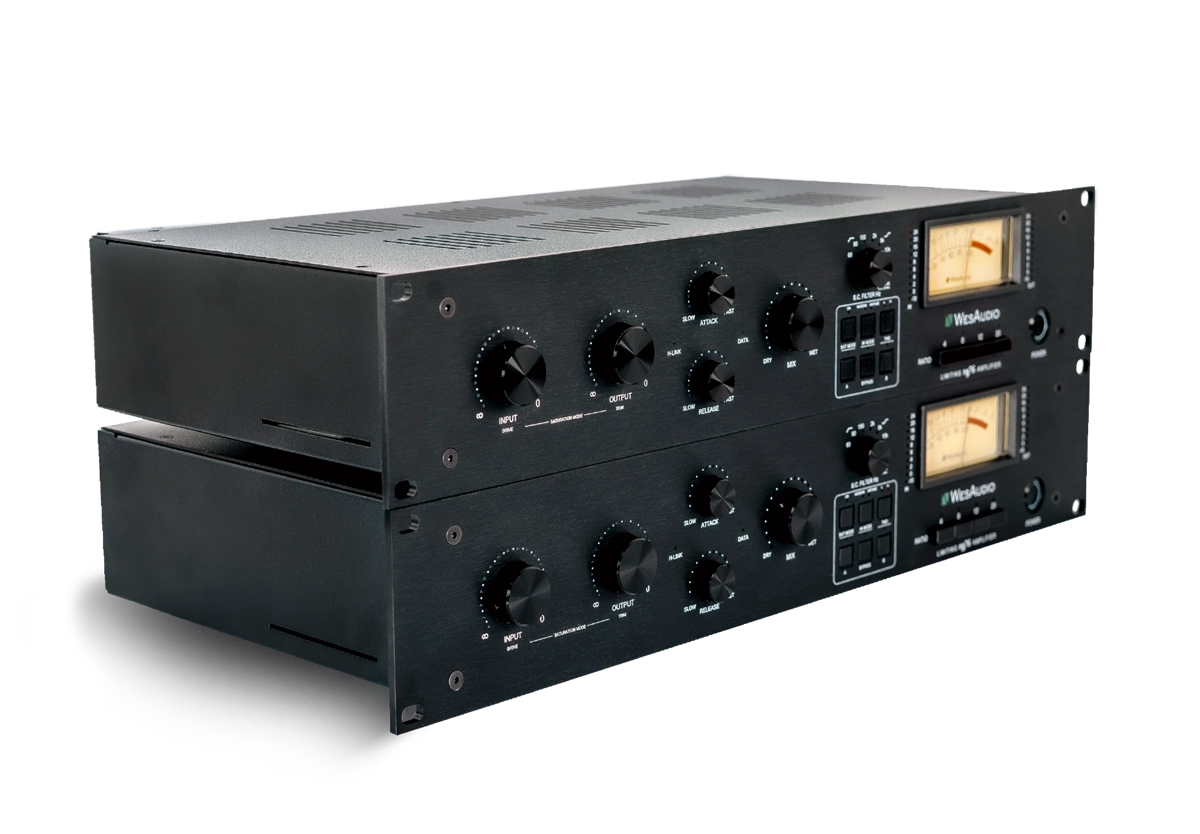
Main Features
ng76 fully analog FET compressor with digital recall.
ANALOG SOUND, DIGITAL CONTROL
True ANALOG sound with extremely convenient control!
100% Analog FET Compressor
- ng76 is a 100% analog processing unit with +24dBu of headroom.
- Despite its fully digital control, the analog signal path delivers the lightning-fast compression sound known from countless records.
True Stereo Operation
- Two ng76 mono compressors can be linked via dedicated software.
- Link compression detectors using special cables (included with stereo-matched pairs) for true stereo compression.
- Option for dual mono compression with all parameters linked across both units.
- Any changes made on one unit will be automatically reflected on its paired twin.
MIX Knob for Parallel Compression
- FET-style compression is known for being lightning-fast, punchy, and aggressive.
- The Mix knob allows for parallel compression, giving you control over how much of that distinct sonic character to dial in.
- The Mix knob also lets you blend in the saturation mode to add warmth and harmonic distortion.
THD – Total Harmonic Distortion
- Total Harmonic Distortion (THD) button allows you to dial in additional sonic content with Low or High settings.
- Fully based on the FET circuit, this design lets you control how saturated your compression becomes.
Carnhill Transformers
Saturation Mode
Selectable Input Stage
The ng76 offers both Modern and Vintage modes to accommodate two revisions of the 1176 compressor (F & G):
- Vintage mode: Uses a transformer-balanced input, providing a more traditional, warm analog sound.
- Modern mode: Features an electronically balanced input, offering a cleaner and more transparent sound.
Sidechain EQ Sections
Features a sophisticated sidechain circuit EQ with two independent sections:
- High-pass filter (HPF) at 60Hz, 90Hz, and 150Hz to preserve low-end information during compression.
- High shelf filter at 2kHz, 5kHz, and 10kHz to tame high frequencies and emphasize high/mid-range content for more control over the top end.
Hardware A/B Buttons to Compare Two Independent Settings
Even when using the ng76 as a fully analog signal processor, you can effortlessly switch between two parallel settings with the push of a simple button, providing seamless control and flexibility.
USB or Ethernet Connectivity
The ng76 supports direct USB connection for easy setup, or you can manage it over your local network by simply plugging an Ethernet cable into your router, allowing for flexible control and integration.
Gain Reduction, Input and Output Metering
- The ng76 features the classic Vintage Gain Reduction meter, instantly recognizable for its timeless design.
- For enhanced usability, it also provides precise visualization of both input and output levels simultaneously.
Analog Automation
We’ve all wanted to adjust device settings dynamically throughout a song, and now it’s easier than ever! Simply draw automation lines in your DAW, and your analog device will respond accordingly.
Plus, you can use the five touch-sensitive encoders to record automation directly into your DAW, making the process even more seamless!
Total Recall and Plugin Control
In addition to its classic analog compressor, the ng76 offers one of the most sought-after features in the audio industry—TOTAL RECALL.
With full plugin control via VST2, VST3, AU, AAX, and AAX DSP, the ng76 is compatible with nearly all major DAWs. This level of integration allows you to recall settings instantly, ensuring a smooth and efficient workflow.
Total DAW integration will revolutionize your production process, giving you unparalleled control and convenience.
Main Features Summary:
Stereo Matched Pairs:
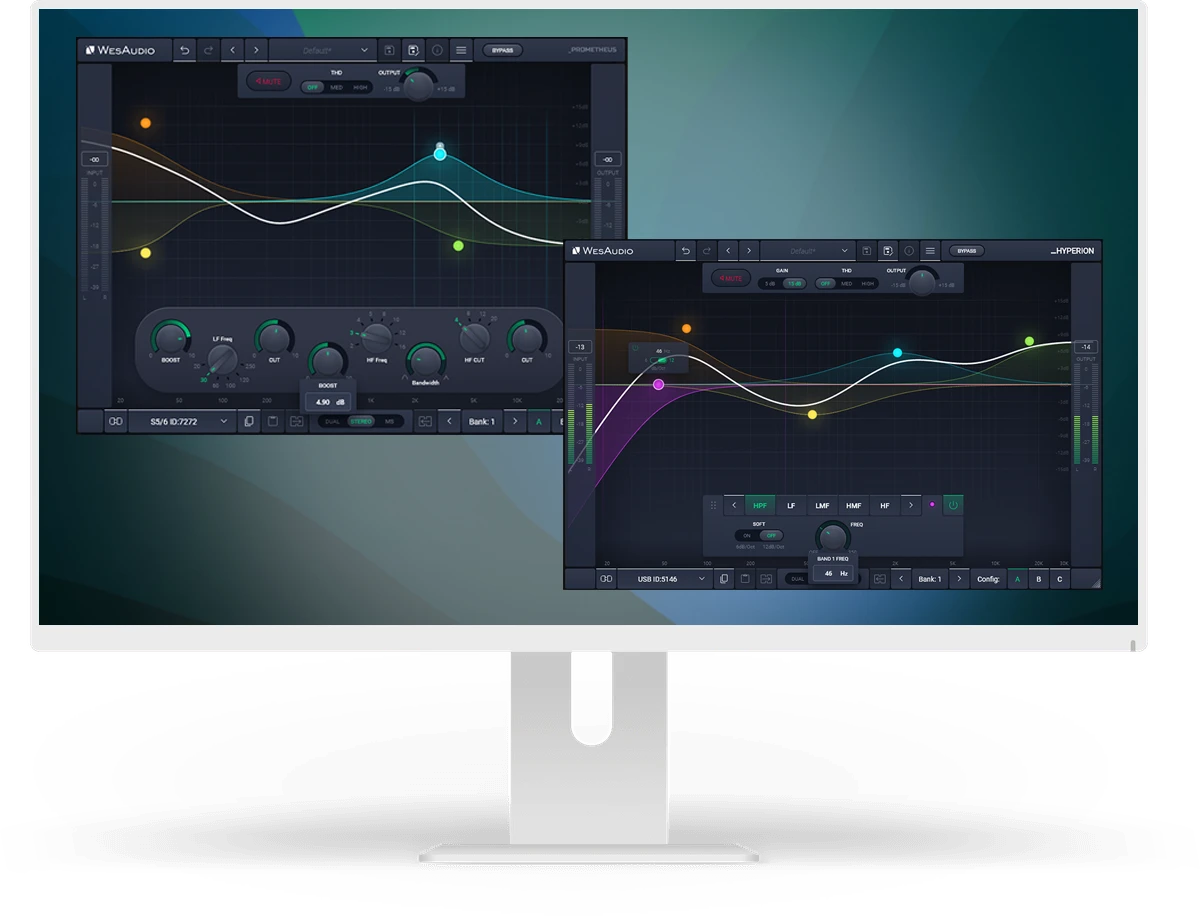
APP FOR MAC AND PC
Digital control features for fully analog units.
Specification
ng76 specification
| Attack time | 20 us – 800 us |
| Release time | 50 ms – 1100 ms |
| Compression ratio | 4:1; 8:1; 12:1; 20:1; all button mode and all combinations True Bypass |
| SC High Pass filter | 60,90,150Hz |
| SC High Shelf filter | 2kHz, 5kHz, 10kHz |
| Output impedance | 50 ohm |
| Frequency response | 20Hz to 20kHz (+/- 1dB) |
| Signal to noise ratio SNR | SNR >83dB |
| Max signal level | +24dBu |
| THD+N MIN | 0.2% |
| Noise floor | -95dBu |
| Power consumption | 8W |
| Unit dimensions | 88x483x235 mm |
| Box dimensions | 274x550x382 mm |
| Unit weight | 4,8 kgs |
| Box weight | 6,7 kgs |
| Balanced output and input | |
| Case Rack | 2U |
| Warranty | 2 years |
User Manual
Download ng76 User Manual
NG500 VIDEO STORIES
Watch the product videos
FAQ
Frequently Asked Questions
ng76 implements two different revisions due to the selectable input mode:
VINTAGE – Revision F (transformer balanced input).
MODERN – Revision G (electronically balanced input).
There is no need to uninstall the WesAudio application before installing a new release. The update process will seamlessly overwrite the existing version.
If the module doesn’t react to any changes to the knobs on the front panel, the first necessary step is to rewrite firmware into the flash memory (Factory reset procedure re-writes firmware into internal flash memory – it doesn’t affect anyhow unit configuration). To proceed with factory reset, please follow below steps:
- Connect unit either:
- Through front panel USB socket,
- Or keep the unit in ng500 chassis – _TITAN, but please note that chassis has to be connected to the PC/MAC either via USB or Ethernet cable.
- POWER OFF your 500 series chassis.
- Depends on the product please press following front panel control:
- _MIMAS – RATIO button,
- _DIONE – RATIO button,
- _RHEA – THD button,
- _PROMETHEUS – HIGH CUT encoder (top-right encoder),
- _HYPERION – LMF GAIN encoder,
- _CALYPSO – MENU encoder,
- _PANDORA – HIGH SC FILTER (right button).
- While keeping this control (button/encoder) pressed, POWER ON your 500 series chassis.
- LEDs should present a strange pattern.
- Now open GConManager:
- WIN: C:/Program Files (x86)/WesAudio/GConManager.exe
- MAC: /Applications/WesAudio/GConManager.app
- Or click on the WesAudio “Tray” icon, and select “Open GConManager”
- Go to _UPGRADE application.
- Hit start!
If the module doesn’t react to any changes to the knobs on the front panel, the first necessary step is to rewrite firmware into the flash memory (Factory reset procedure re-writes firmware into internal flash memory – it doesn’t affect anyhow unit configuration). To proceed with factory reset, please follow below steps:
- Connect the unit to either USB or Ethernet.
- POWER OFF your unit.
- Depends on the product please press following front panel control:
- ngBusComp – far left Ratio on Channel 1 (Ratio “-”),
- _TITAN – any LINK button between slot connectors,
- ngTubeEQ – THD encoder on Channel 1,
- ngTubeComp – Saturation encoder on Channel 1,
- ng76 – “IN MODE” button,
- ngLEVELER – use a small screwdriver and press button available on the rear panel via a small hole in the chassis.
- While keeping this control (button/encoder) pressed, POWER ON your unit.
- LEDs should present a strange pattern.
- Now open GConManager:
- WIN: C:/Program Files (x86)/WesAudio/GConManager.exe
- MAC: /Applications/WesAudio/GConManager.app
- Or click on the WesAudio “Tray” icon, and select “Open GConManager”
- Go to _UPGRADE application.
- Hit start!
This is a very common issue and in most cases the root cause lies in the connection of the unit and audio interface. If that happens it should be checked if audio interface input isn’t connected to the chassis input and if audio interface output isn’t connected to chassis output. As this initially would seem to be entirely wrong and shouldn’t work at all, as all our units implement “True Bypass” via relays, the unit will pass a signal when the bypass is engaged. The reason for that is that the relay is in fact hard wiring input to the output, and thus the unit will pass the signal, as it doesn’t go through any active circuit of the unit.
This is actually how it is supposed to work, so after the plug-in instance is created, please use a small triangle button which usually is on the bottom side of the plug-in and select proper HW ID from the drop down menu. If the drop down menu doesn’t list any hardware units, please check Your connectivity and other possible root causes in this FAQ.
This is a wide topic, and there may be at least several root causes, but there are few things that should be checked. However, the first and most important thing is to double check that GConManager doesn’t list this device in the _CONFIG app. If this is the case, it means that WesAudio unit can’t connect on the OS level, and some of the below steps may help:
- First of all double check if module connection is properly executed, this procedure is described here.
- USB specification indicates that USB 2.0 works up to 5 meters. This is however not entirely true, as it strongly depends on the peripherals that unit is connected to. Even if our modules are USB 2.0 compatible, your USB port could support USB 3.0 – USB is a backward compatible protocol, so it may be that USB 3.0 cable length limit should be considered which is 2 meters. We would recommend having a USB cable up to 2 meters to remove those limitations from the equation.
- USB HUB is very common root cause to those problems, if module can’t connect via HUB – just for the sake of the test, it is mandatory to connect unit directly to PC/MAC to verify if the problem isn’t caused by it.
- Please note any system warnings attached to “WesAudio Tray Icon”.
As USB controllers have limited capacity it could be a reason for random unit disconnection. Usually, it happens when a lot of USB devices are plugged into the PC/MAC. The usual behavior would be that the unit works normally, and after reboot it doesn’t, but it strongly depends on the OS implementation so exact reaction could be a little bit different. If this is suspected, just for the test, it would be good to disconnect most of the devices from the USB ports, reboot PC/MAC and double check the connectivity from stability point of view. If it leads to the conclusion that this is the root cause of the problem, we would recommend using a decent USB hub, and ideally a TB/USB dock station which tends to offload a lot of responsibilities from our PC/MAC.
If the unit was working fine, and suddenly it couldn’t connect (it is not visible in the GConManager _CONFIG app) that could lead to the conclusion that some devices were added to our USB line, and we could have problems with the USB controller inside PC/MAC. In that case please check the description in the above “Unit disconnects by itself”.
GConManager in Admin mode enables special functionalities which are used during WesAudio units calibration.
Starting from GCon 15, Admin mode can be activated through the GCon Manager app:
- Open the GCon Manager app.
- Navigate to Settings.
- Click the padlock icon to unlock the settings.
- Check the Admin Mode box to enable it.
Alternatively, Admin mode can be activated by following these instructions:
OSX:
- Please open terminal.
- Copy-Paste following command:
open /Applications/WesAudio/GConManager.app --args --admin
WINDOWS:
- Go to “START” and open “Command Line”.
- copy paste this command:
"c:\Program Files (x86)\WesAudio\GConManager.exe" --admin

